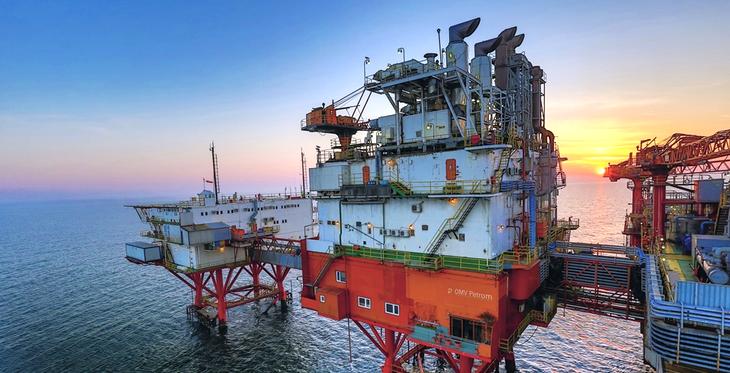OMV Petrom announced it has started production from a new offshore well LVO7, drilled in the Lebada Vest field. According the company, LVO7 is the first multilateral well drilled in Romania, a new technology that allows us to reach different target zones within a reservoir through a single well.
“Multilateral wells allow us to recover additional resources from our mature fields and to increase production, while managing costs”, said Peter Zeilinger, member of OMV Petrom Executive Board, responsible for Upstream.
The investment for drilling the well and connecting it to existing infrastructure amounts to approximatively 30 million euro. The well has two branches which were drilled, starting since February, at a length of ~3,200 meters, respectively ~2,200 meters below the seabed.
With an initial production of 1,700 boe/day, LVO7 ranks among top 10 producing wells in OMV Petrom’s portfolio.
Lebada Vest is the biggest offshore oil field in Romania which is currently in production. It was discovered in 1984 and has already been producing for decades, thus facing the challenges and strong investment needs related to a mature field, says the company.
Since the last decade of the 20th century, the drilling technology has improved significantly, with successful multilateral drilling in a vertical probe, writes engineer Sorin Alexandru Avram, in his doctoral thesis (2017, Petroleum-Gas University of Ploieşti). In most cases, building a multilateral well will cost more than a vertical or horizontal probe, the quoted expert explains, while “economic benefits will derive mainly from increased production and reserves”.
Exploration in the Romanian continental shelf of the Black Sea started in 1969. The first hydrocarbon discovery was in 1980, and the first production in the Black Sea started in 1987. Currently, OMV Petrom has exploration, development and production operations in the shallow waters (Istria block) and exploration operations in partnership with ExxonMobil in deep water areas (Neptun Deep).
Oil and gas production in shallow waters (Istria block) amounts to approximately 30,000 boe/day, accounting for around 18% of the group’s domestic production. The production comes from five producing fields: Lebada Est (discovered in 1980), Lebada Vest (discovered in 1984), Sinoe (discovered in 1988), Pescarus (discovered in 1999) and Delta (discovered in 2007).
